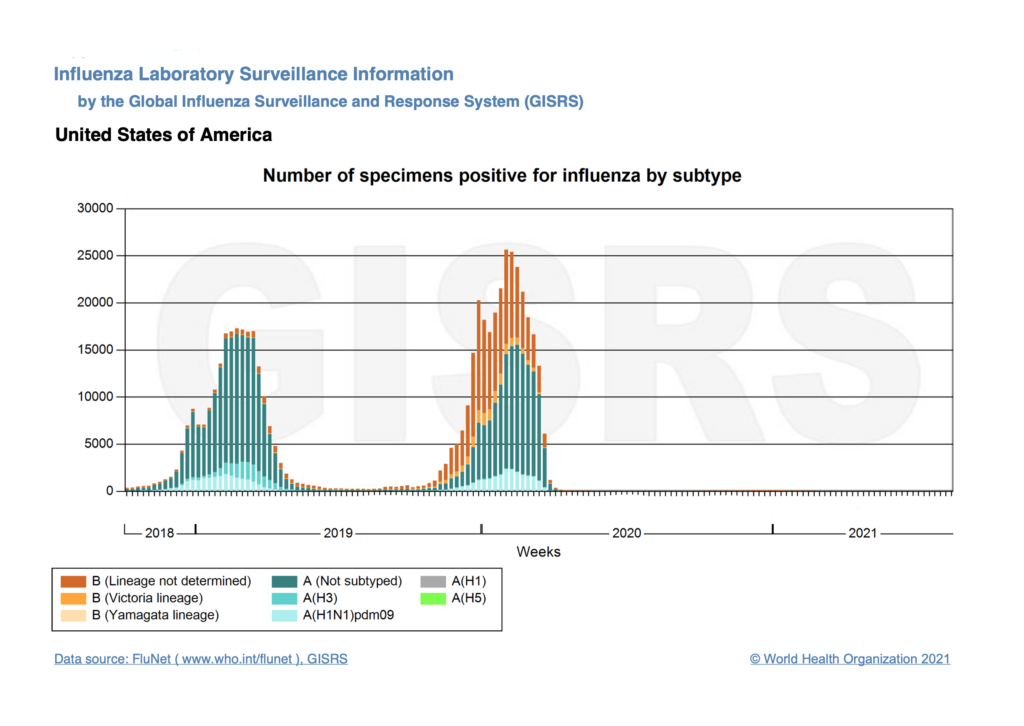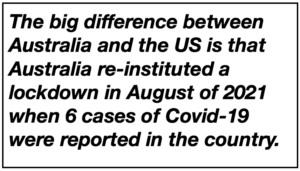Hasan Gokal MD
August 22, 2021
The Covid-19 Pandemic in 2020 had some unexpected effects. One was the significant reduction of other seasonal illnesses such as the Flu (Influenza) and common cold, among others. The first indication of this was seen when Australia reported a severely diminished Influenza season. Since the Southern hemisphere has the winter in July, under normal circumstances, July and August should have been the peak time for influenza. A combined Influenza + Covid-19 infection would have an exceedingly high rate of complications and death, and it was a major concern for the United States. However, this never happened.

It soon became evident that the interventions being used to decrease the spread of Covid, would also work well for other infectious diseases. If a mask can help decrease the spread of Covid infection, why can’t it also decrease the spread of the Flu?
Six months after the Australian winter, the Northern Hemisphere countries experienced the same effect. According to the CDC, the 2020 Influenza Season was almost non-existent.
This year, however, it could be very different. With the Delta variant raging across states with low immunization rates, Covid hospitalizations are at a record high in the most severely affected areas of the US. The flu season alone can stress the medical system’s capabilities to the brink. Add the potential for the Lambda variant to become the next wave going into the flu season, a combination of Flu and Covid infections could be potentially devastating.
The first question that arises is that why expect the flu to come back this year?
For a couple of reasons. First, mask use has dropped off precipitously in most of the worst affected areas. Debates over the enforcement mask mandates in public schools and businesses are now snagged in the courts, and the political will for some of the governors to enforce difficult public health measures is missing.
In Australia this year, influenza rates remain at historically low levels (Australian Department of Health).

The big difference between Australia and the US is that Australia re-instituted a lockdown in August of 2021 when 6 cases of Covid-19 were reported in the country.
Additionally, the majority of Australians support a mandatory masking mandate in public. These measures are significantly different than in the United States, and consequently, similar results cannot be expected.
Public schools, colleges and business are returning to in-person activities, unlike during the last flu season. Strict cleaning and disinfection protocols have waned away slowly, as Covid fatigue combined with the desire to return to a normal life has led to abandonment of “fist bumps” and “elbow shakes” in exchange for hand shakes and hugs. Each of these will have a significant increase of the transmission of non-covid infections, in addition to Covid-19.
When it comes to the flu vaccine, in some ways, we have been victims of our own success. By almost eliminating the influenza season for 2020/2021, the guidance for the development of next year’s vaccine is missing. This leaves a lot more uncertainty about the efficacy of the upcoming year’s influenza vaccine than during the previous years.
There are still many unknown variables which can impact events in the winter.
- Will the rising rate of immunizations be enough to turn the high rates of hospitalization back down?
- Will the immunity of the early immunizers start to fade away after 6 months, leaving them vulnerable in the face of the new strains?
- Will the Lambda variant entering the US, which seems less affected by immunization, start a return to the early days of the pandemic, with a new search for effective immunizations?
- Will any of the next groups of identified variants post a significant risk?
What we do know for certain is that the clouds are gathering, and we may be in for a rough winter, given the patterns of infection that we’ve been observing.
Stay safe, and look after your loved ones.